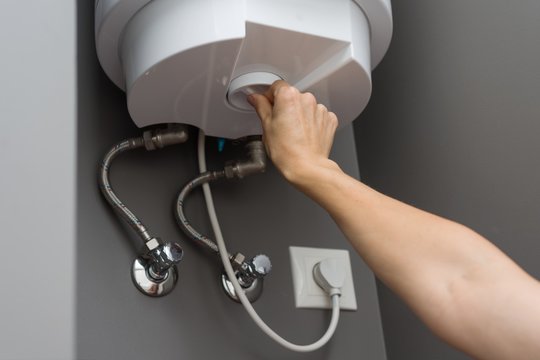Were you hunting for advice concerning What Kind of Maintenance Do Water Heaters Need??

Hot water is essential for day-to-day comfort, whether it's for a rejuvenating shower or washing meals. To guarantee your hot water system runs effectively and lasts longer, routine maintenance is key. This write-up provides functional tips and insights on exactly how to preserve your home's warm water system to prevent disruptions and costly fixings.
Intro
Preserving your home's warm water system could seem daunting, however with a couple of basic actions, you can ensure it operates efficiently for several years to come. This guide covers every little thing from understanding your hot water system to DIY maintenance ideas and recognizing when to contact expert aid.
Importance of Maintaining Your Hot Water System
Routine upkeep not just extends the life-span of your hot water system however additionally guarantees it runs efficiently. Overlooking maintenance can lead to decreased efficiency, higher energy expenses, and even premature failure of the system.
Signs Your Warm Water System Requirements Upkeep
Recognizing when your warm water system requires focus can protect against significant concerns. Keep an eye out for indicators such as irregular water temperature level, odd sounds from the heating system, or rusty water.
Flushing the Water Heater
Flushing your water heater eliminates sediment buildup, boosting performance and lengthening its life.
Monitoring and Changing Anode Rods
Anode rods avoid corrosion inside the tank. Checking and replacing them when worn out is essential.
Complex Issues Requiring Specialist Aid
Instances consist of major leaks, electrical troubles, or if your hot water heater is constantly underperforming.
Routine Expert Maintenance Benefits
Specialist upkeep can include comprehensive evaluations, tune-ups, and ensuring compliance with safety and security criteria.
Checking and Adjusting Temperature Level Setups
Adjusting the temperature level setups makes sure ideal performance and safety and security.
DIY Tips for Maintenance
You can execute a number of maintenance jobs on your own to keep your warm water system in top problem.
Looking for Leaks
Routinely evaluate pipes and connections for leakages, as these can lead to water damages and higher costs.
Comprehending Your Hot Water System
Prior to diving into upkeep tasks, it's handy to comprehend the standard elements of your hot water system. Commonly, this includes the hot water heater itself, pipelines, anode rods, and temperature controls.
Month-to-month Maintenance Tasks
Routine monthly checks can aid catch small issues before they intensify.
Testing Stress Relief Valves
Testing the pressure safety valve guarantees it operates correctly and stops excessive stress build-up.
Protecting Pipelines
Insulating warm water pipes minimizes warm loss and can conserve power.
When to Call a Professional
While do it yourself maintenance is advantageous, some issues require professional expertise.
Verdict
Regular maintenance of your home's hot water system is vital for efficiency, durability, and price financial savings. By complying with these ideas and recognizing when to seek specialist help, you can ensure a reliable supply of warm water without unanticipated interruptions.
How to Maintain an Instant Hot Water Heater
Before tinkering with your hot water heater, make sure that it’s not powered on. You also have to turn off the main circuit breaker and shut off the main gas line to prevent accidents. Also turn off the water valves connected to your unit to prevent water from flowing into and out of the appliance. 2. When you’re done, you have to detach the purge valves’ caps. These look like the letter “T†and are situated on either side of the water valves. Doing so will release any pressure that has accumulated inside the valves while at the same time avoid hot water from shooting out and burning your skin. 3. When the purge valves’ caps are removed, you have to connect your hosing lines to the valves. Your unit should have come with three hoses but if it didn’t, you can purchase these things from any hardware or home repair shops. You can also get them from retail stores that sell water heating systems. Read the user’s manual and follow it to complete this task properly. When the hosing lines are connected, open the purge port’s valves. 4. You should never use harsh chemical cleaners or solutions when cleaning your unit. Make use of white vinegar instead. It should be undiluted and you’ll probably use about 2 gallons. 5. Now flush your water heater. This task should probably take about 40 minutes. We can’t give you specific directions for this because the procedure is carried out depending on the type, model and brand of your heater. With that being said, refer to the user’s manual. 6. When you’re done draining the unit, you have to turn off the purge port valves again. Remove the hosing lines that you earlier installed on each of the water valves. Put the valve caps (purge port) back in their respective places and be very careful so as not to damage the rubber discs that are found inside these caps. 7. Now that everything’s back in place, check your user’s manual again to find out how to reactivate your water heating system. 8. Once it is working, turn one of your hot water faucets on just to let air pass through the heater’s water supply pipes. Leave the tap on until water flows smoothly out of it. https://www.orrplumbing.com/blog/2014/september/how-to-maintain-an-instant-hot-water-heater/

We are very taken with Tips on Maintaining a Water Heater and I really hope you enjoyed reading our piece. Do you know anybody else who is occupied with the subject? Do not hesitate to share it. I truly appreciate your readership.
This Site